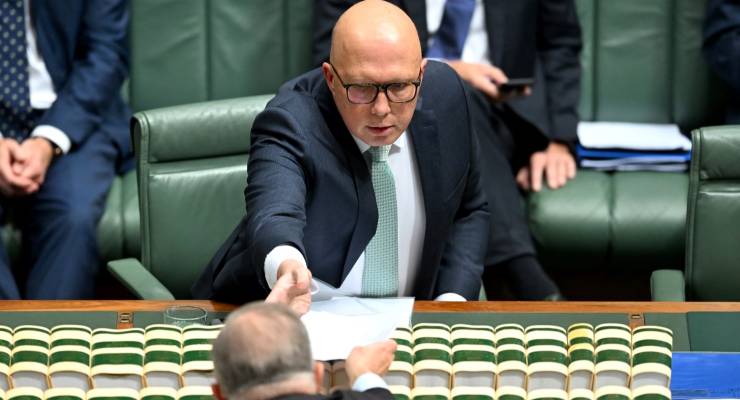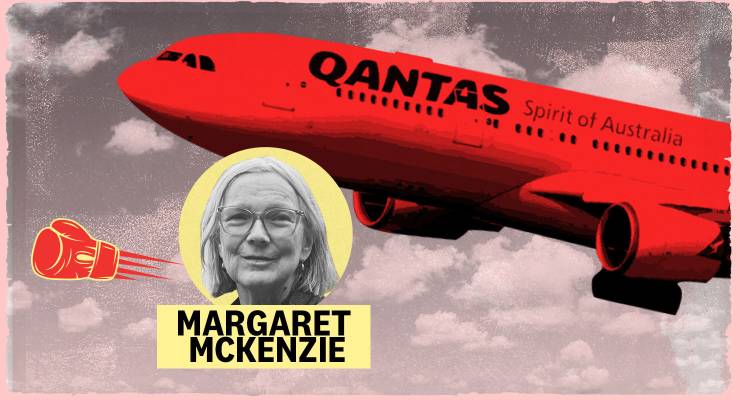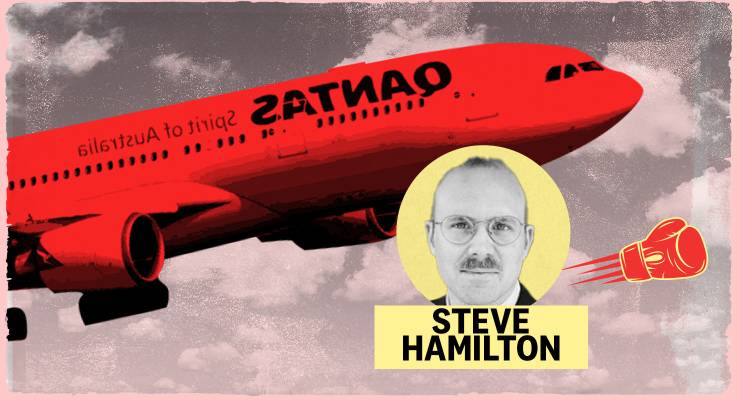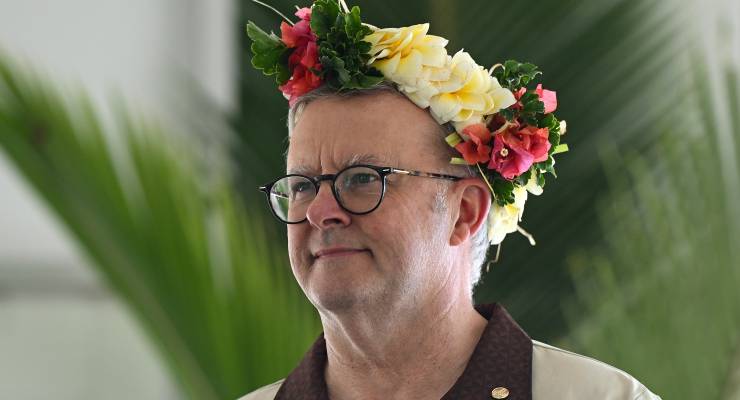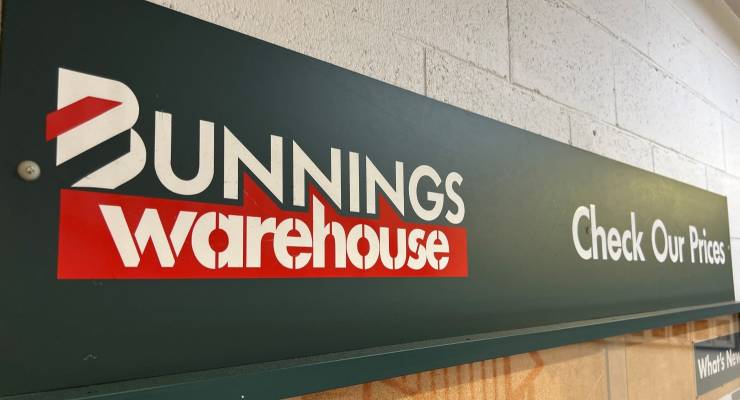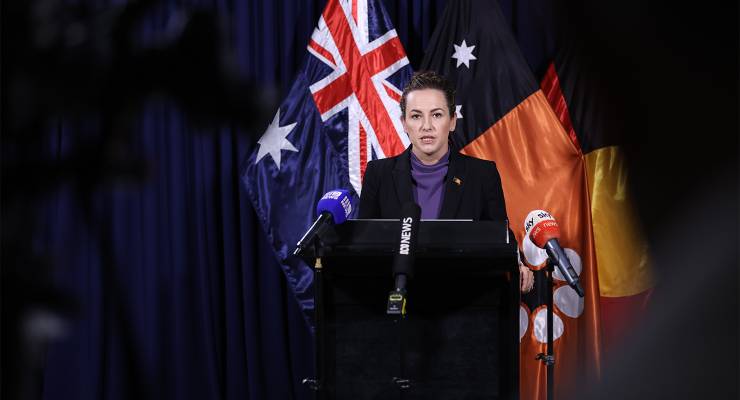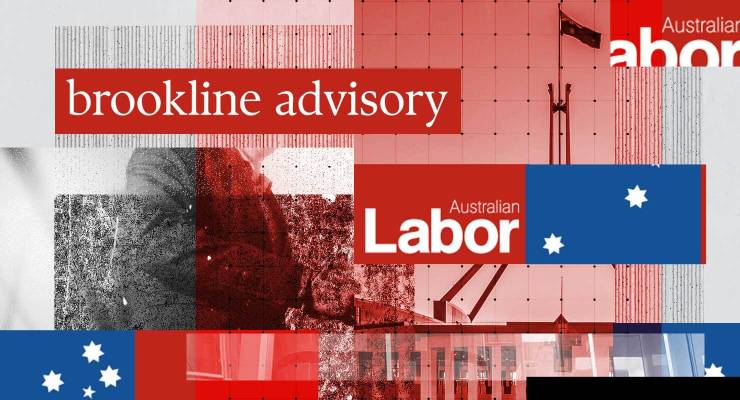This week's debacle over census questions on sexuality and gender isn't the only example of Labor giving Dutton an effective veto over its policies.
When opposition leader, Anthony Albanese liked to respond to media demands for Labor policy by pointing out that Labor had, in fact, lost the previous election and therefore had to revamp its policies, so he wouldn’t be committing to anything at that point.
It was a nice line, but since becoming prime minister, his government has often given the impression it still thinks it lost the last election. Certainly, it is so concerned about what Peter Dutton might say about its policies that it may as well have the opposition leader sit in cabinet.
Take, for example, the government’s clear-cut, straightforward commitment from the 2022 election to introduce a dramatically lower reporting threshold for political donations, back to $1,000 after twenty years of it being well above $10,000, and requiring real-time disclosure of donations.
There’s nothing complicated about that commitment. Real-time disclosure is already in place in Queensland and partly in place in NSW. But the government has done precisely zero to implement the commitment except to repeatedly drop to journalists that new laws were forthcoming. The last drop was three weeks ago, with the oft-promised laws to finally appear, we were told, in September — meaning there’s a very good chance they won’t be passed during the current Parliament. Why? Because Labor wants bipartisanship. Despite promising to make the changes before the last election and then winning the election, Labor has handed the Coalition a veto over its own election commitment.
Labor has also given Dutton a veto over another election commitment; to prohibit discrimination on the basis of religious faith and discrimination against students — making Albanese’s the second government in a row to make such a promise and then abandon the issue because of its political sensitivity.
There’s also Albanese’s lack of interest in a Makarrata Commission, despite making the implementation “in full” of the Uluru Statement from the Heart his first words as Prime Minister-elect in May 2022. Dutton opposes that too.
This week’s utter debacle over including a question on LGBTQIA+ Australians in the 2026 census — another election promise — reflected the same willingness to let Peter Dutton — who, certain as night follows day, deemed such a question part of a “woke agenda” — set the terms of engagement. The process of developing additional questions was simply shut down, almost mid-meeting, with Labor announcing there would be no new questions in 2026. A succession of ministers, including the utterly hopeless Richard Marles, were sent out to explain that the government didn’t want any divisiveness. This morning, reading the room and the growing revolt in his own caucus and even the outer reaches of his ministry, the prime minister intervened to reverse the decision.
The issue rapidly took on disproportionate symbolism as some sort of official recognition of LGBTQIA+ Australians. Forgotten was the fact that providing, even voluntarily, highly personal information to any government is fraught with risk. Governments time and again have demonstrated their inability to keep personal data secure; nor is there anything to prevent future governments from misusing personal information. The census is a deep intrusion by governments — including all future governments — into the personal lives of Australians and should be dramatically scaled back or even halted altogether, rather than endlessly expanded to push ever deeper into citizens’ privacy.
But Labor wasn’t motivated by such complicated questions. It was merely worried what Dutton would do. It speaks of a timid government that second-guesses itself constantly, that governs with one eye on what its political opponents will make of its announcements. There’s governing from the centre and minimising political risks, and then there’s allowing your opponents to determine how you govern, and this was very much the latter. Dutton has Labor badly rattled.
A more confident government would have let the process run, accepted a new question and pointed out how weird it was that Dutton opposed it. But this certainly isn’t a confident government. If you don’t want to do things because they might be labelled “divisive”, you shouldn’t be in the business of politics. After all, prime minister, Labor did win the last election.
With the crises at Qantas and other privatised industries now manifest, we are returning to the reasons we nationalised in the first place.
Australians are fed up with Qantas as it takes eye-watering sums of public money while posting huge profits. It controls more than half of the nation’s highly concentrated domestic aviation sector (with help from its subsidiary Jetstar), and has been one of the most complained about companies over the past two years.
This week Labor handed down its much-anticipated aviation white paper, which proposed an ombudsman to oversee airlines and airports. But does the national carrier need a bigger shake-up? Is it time to nationalise Qantas? That’s the question debaters are tossing around in today’s Friday Fight.
Arguing against privatisation we have economist Steven Hamilton, and arguing for we have economist Margaret McKenzie.
The chickens are finally coming home to roost for the disastrous privatisation experiment. Nowhere is this more evident than for air transport, airlines, air services and airports. Qantas we mean you.
The question is why it’s taken so long for the failure of privatisation to become evident and merit political attention. The crises at Qantas and other areas are outcomes of the slow burn of many decades of increasingly inadequate, uneven and expensive service delivery and neglect of capital investment. The answer is to reinvent the wheel and re-nationalise Qantas.
Public ownership of Qantas is the elephant in the room for that masterpiece of obfuscation, the Aviation White Paper.
Qantas was fully nationalised in 1947 by the Chifley government, which purchased all private shares in it due to its “greatly increased expansion and capital requirements”. This was “in line with government policy and with previous actions by all other main Empire units” which all owned their airlines. That was another era.
Qantas was privatised from 1992 (at its merger with the government-owned domestic airline) to 1997 for a value of over $2 billion, worth at least double that in current money, and cheap at the price. The context was the rise and enthusiastic embrace of the neoliberal agenda from the 1980s by all sides of politics as part of microeconomic reform, a term uniquely Australian and now strangely absent from the political lexicon.
Never mind that there was little empirical evidence to support privatisation; ideology would do, courtesy of Thatcher et al (and my, hasn’t that gone well, as the UK prepares to renationalise rail, etc, at last).
The rationale for the privatisation of Qantas and other parts of the air transport industry was seen as the same as for any public enterprise, a one-size-fits-all. Government ownership was assumed to be inefficient and introducing competition would improve industry performance, regardless of the technology of the industry and the needs of its users. Integral to this was the deregulation of labour markets and the weakening of industrial relations.
Times of crisis for government businesses were conveniently seized upon to justify the sell-off of public assets. Public asset sales were also used to fabricate an improvement of the budget bottom line, as Costello did by including asset sales in the budget, including Qantas.
It did not matter that for Qantas, as for other public enterprises with traditionally cyclical returns, government budgets absorbed surpluses and losses over time. The hard-to-measure benefits from public ownership, investment in, and delivery of services were lost.
The resulting erosion of real wages and working conditions, as well as weakened morale, together with the neglect of capital investment, has damaged the quality and reliability of service delivery, producing crises over decades.
With the crises in Qantas and other privatised industries now manifest, we are returning to the reasons for nationalisation in the first place, as is now the case with Qantas.
Whereas public ownership was seen as unduly politicised, privatisation has shown that private ownership of public infrastructure is even more politicised.
The privatisation of Qantas and other publicly owned enterprises has been accompanied by a massive amount of regulation. The tendency for only two airlines to be sustainable in Australia also called for additional regulation after privatisation.
The new regulation was meant to replicate competitive conditions where the most efficient delivery is by one or very few enterprises. Regulation was also needed to address the price setting and control of supply for commercial objectives which could exclude access for some consumers.
Regulation faced the problem that the nature of infrastructure industries was such that so-called competitive pricing of the outputs would not allow capital costs to be met over time, let alone for innovation. That is why they were nationalised in the first place.
The air transport industry faces network externalities, whereby adding an additional destination disproportionately increases the value for all customers, not just those travelling to and from that destination. But the costs for that destination won’t be covered by ticket prices, making it commercially unviable to add it.
When these industry characteristics are coupled with a relatively small market size in terms of numbers of customers and large distances in a country like Australia, it’s hard for more than one or two airlines to run profitably. When those airlines are in place, they are in a position to raise airfares to customers and engage in activity that excludes competition from other airlines seeking to enter the market.
Public ownership of airlines is hardly the exception that the spinners would have us believe. By re-nationalising Qantas, Australia could join the many countries that have some or whole public ownership of their airlines.
Read the opposing argument by Steven Hamilton.
Let’s reconsider the two crucial factors: competition and information.
Australians are fed up with Qantas as it takes eye-watering sums of public money while posting huge profits. It controls more than half of the nation’s highly concentrated domestic aviation sector (with help from its subsidiary Jetstar), and has been one of the most complained about companies over the past two years.
This week Labor handed down its much-anticipated aviation white paper, which proposed an ombudsman to oversee airlines and airports. But does the national carrier need a bigger shake-up? Is it time to nationalise Qantas? That’s the question debaters are tossing around in today’s Friday Fight.
Arguing for privatisation we have economist Margaret McKenzie, and arguing against we have economist Steven Hamilton.
To be clear: there are some things governments should do, and there are other things private firms should do. And the government absolutely has an important role in laying down the ground rules for how private firms do what they do.
The obsession with privatising government services through the 1980s and 90s clearly overreached in a number of instances. The privatisation of government employment services is one example that comes to mind. The exclusive purview of private providers in the childcare sector is another.
But overreach in some respects doesn’t imply overreach in all. Indeed, I can think of many highly positive privatisation examples.
There’s simply no good reason for governments to own and run electricity or telecommunications retailers, for example. Or a bank. Or an airline. We’ll get to that one shortly.
The challenge is to understand when government ownership makes sense and when it doesn’t.
It’s uncontroversial to claim that in typical cases, markets offer the best possible way to organise production. Private market participants deciding for themselves whether to risk their own capital on a venture have every incentive to ensure its success. And they have nobody else to blame if it fails. It’s efficient and it’s fair.
But this relies on a raft of assumptions, which aren’t always satisfied. Let’s consider two crucial ones.
The first is competition. Competitive markets play an important role in keeping private companies honest. When consumers face few alternatives, the merit of private markets dissolves. Firms can be inefficient, perform poorly, or exploit customers without consequences because they have no incentive to do otherwise.
But a lack of competition, on its own, is not enough to justify government ownership. And that’s because there’s a less intrusive alternative with the potential to generate incentives for good performance while limiting firms’ exploitative practices.
And that’s regulation.
Monopolies are quite common and yet we almost never resort to government ownership to deal with them. Take, for example, electricity transmission. Like a troll blocking the only bridge for miles, owners of transmission wires can exploit their monopoly position. So governments tell them what they are allowed to charge.
We have well-functioning regulatory agencies all across the country doing exactly this every day, obviating government ownership of trillions of dollars of assets.
That takes us to the second assumption, which is perfect information. There are cases in which regulation is simply unworkable. These involve extreme asymmetries of information between consumers and producers or between producers and government.
Consumers knowing more about their own health status than their insurer makes private health insurance markets unworkable (economists call this “adverse selection”). And the reverse is just as problematic, with medical professionals knowing far more about your true health needs than you do.
How viable would a fully private health system be with such rampant information asymmetries? I have strong doubts. Healthcare is just one of many markets in which it’s best for governments to have a high degree of direct involvement.
That doesn’t mean they’re perfect. And of course, it isn’t always the case that governments will do a better job than private markets — but it’s often a decent bet.
Which leads us to our question of the week: should we renationalise Qantas?
To my mind, the answer is very clearly: no. To understand why, let’s reconsider the two crucial factors: competition and information.
The airline industry is among the most competitive in the world. Where competition is robust, airlines have every incentive to efficiently provide good services.
Indeed, to the extent you are dissatisfied with Qantas, the best solution is likely to simply unleash more competition. That means ensuring free and fair access to slots at airports. And it means allowing access to domestic routes by foreign carriers — something the government refuses to do so as to prop up Qantas’ monopoly.
To the extent you believe Qantas would still maintain some monopoly power, at least on certain routes, then there may be a role for regulation to limit the exploitation that results.
The modern online airfare market is extremely information-rich. Customers have access to every bit of information they could ever want. We have apparently effective regulation of airline safety. We employ regulations to ensure airlines are transparent about the fees and charges they apply to tickets. We could of course do more, like requiring mandatory compensation for late flights, as they do in the US.
Worried about Qantas being available in an emergency? Governments have ample ability to incentivise or compel Qantas to serve the national interest in times of crisis. Worried about Qantas making too much money? Governments have ample ability to tax the profits generated by large corporations like Qantas.
None of this requires public ownership. None of this requires confiscating taxpayers’ money and investing it against their will in an airline on their behalf.
DING! DING! DING! CRIKEY EDITORS DECLARE HAMILTON HAS OFFICIALLY PASSED HIS ALLOCATED WORD COUNT
None of this requires the misalignment of incentives and inefficiency that would inevitably result.
There are some things private firms should do. And there are other things governments should do. Flying just isn’t one of them.
Read the opposing argument by Margaret McKenzie.
Following Crikey's inquiries into a new set of social media posts linked to Fox Sports' head of cricket, the News Corp-owned company said it was probing the allegations.
Foxtel is investigating the “alleged improper use” of multiple social media accounts after Crikey revealed that a company executive was behind a secret abusive burner X account.
After first declining to comment on the case, a Foxtel spokesperson said on Friday morning that the company had launched a probe.
“Foxtel has commenced an investigation into the alleged improper use of social media accounts,” they said in an emailed statement.
This investigation comes after Crikey contacted Foxtel and the company’s Fox Cricket general manager on Thursday with a new set of social media posts on X, formerly Twitter, from @RealRagingBull and @YeshowgoodWeiss, a public account under the name of Matthew Weiss.
Earlier this week, a Crikey investigation revealed that Weiss had run the @RealRagingBull account, which surreptitiously abused high-profile sports and media figures including current and former employees, rivals, athletes and more.
The account had also posted inappropriate and offensive content. Weiss did not respond to multiple requests for comment but did delete his personal Instagram after being contacted.
Sources who spoke on the condition of anonymity told Crikey that it was well known within Fox Sports and cricket media circles that Weiss was associated with the account.
 Got a tip about Fox Sports or anything else? You can anonymously contact Cam Wilson here.
Got a tip about Fox Sports or anything else? You can anonymously contact Cam Wilson here.
The primarily News Corp-owned company declined to answer questions about when they first knew about the accounts and instead gave a general statement about their policies. The company’s spokesperson said Foxtel does not “condone racist, sexist, or abusive behaviour in our workplace”.
Earlier this month, Crikey reported on a Nazi salute given by Foxtel CEO Patrick Delany on-set while Fox Sports CEO. The company first denied that the incident occurred, then published a statement from Delany saying that he made the pose to compare it to a Western Sydney Wanderers fan’ chant gesture. A subsequent video of the incident published by The Sydney Morning Herald and The Age showed that Delany was, in fact, imitating Fox Sports host Mark Bosnich’s infamous Sieg Heil while playing English Premier League soccer in the 1990s.
Weiss did not immediately respond to Crikey’s inquiries about the investigation.
Comments are switched off on this article.
Back to top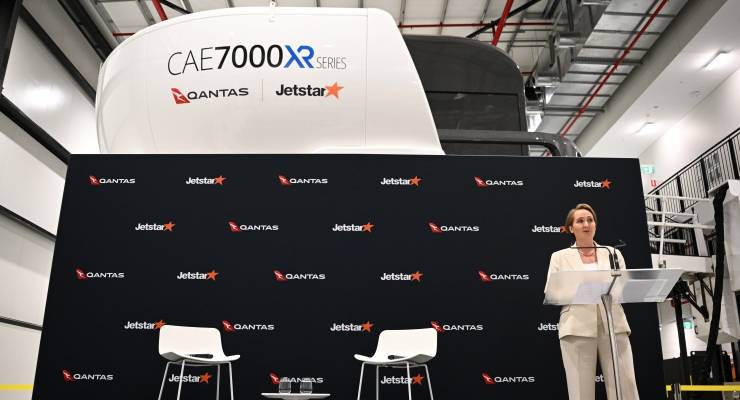
The national carrier posted a post-tax profit of $1.25bn, which dropped 28% on the previous financial period.
A week before Qantas chief executive Vanessa Hudson diverted her maiden annual profit of $1.25 billion, QF6 — a B787 landing in Perth from London — blew a tyre that damaged its fuselage.
It’s an apt enough metaphor for the company’s fall in profits — down 28% but from record levels. It’s also emblematic of the problems that Hudson said the company has been having in its international division, the one which has done the most damage to what is otherwise the result of a still well-oiled senior industry monopolist.
Qantas revenue jumped 10.7% to $21.9 billion but its operating margin fell to 10%, down from 13.5% in 2023 as Hudson was forced to spend $230 million to make some improvements to the customer experience. But anyone who has been on the airline or in its lounges recently knows that more is needed. At some point, years of relentless cost-cutting become self-defeating, especially in the face of well-funded and polished offshore competition with newer aircraft. Hudson backed the strategy as finance chief and she’s now paying the price.
The ongoing cost of living crisis and quite probably dissatisfaction with deteriorating aircraft and service has seen passengers switch from Qantas’ pricey mainline aircraft to low-cost Jetstar. The low-cost arm grew its domestic network by 15% during the year — so look no further for the key reason that Bonza and Rex collapsed (the remains of the latter are still on government-backed life support). Jetstar and the loyalty division that runs the frequent flyer scheme were named as the best-performing divisions in the latest results.
The damaged Qantas plane remains in Perth and the egregious lack of aircraft that Hudson’s predecessor, Alan Joyce, bequeathed to her means that Qantas’ international schedules have once again been thrown into havoc.
Pilots, who agreed to speak on the condition of anonymity, told Crikey that Qantas’ international business is something of a mess, plagued by delays and cancellations. In the latest report by the competition regulator on the sector, Qantas topped cancellations in June with 3% of all flights. It has been very much self-inflicted by the dual strategies of delaying ordering new long-range aircraft and outsourcing all its heavy maintenance offshore.
Qantas brought back two more of its Airbus A380 aircraft during the year — there are still four more to come — but this was “offset by an anticipated increase in competitor capacity … although the decline slowed in the second half”, Hudson said. Again, this problem may prove thornier in the current year, with Turkish Airlines ramping up operations while Hudson has signalled more delays in new aircraft deliveries, which is a global issue. Hudson told a recent pilots meeting that the company was struggling to compete on European routes.
But for an airline that begged — and received — $2.5 billion in government subsidies during the pandemic, which it never paid back, Qantas is understandably in rude financial health, buttressed by a more than 60% domestic market share that will only expand after the collapse of smaller players Bonza and Rex. And let’s face it, the profit and bonus-obsessed Joyce was always going to manage his exit (as slightly fast-tracked as it was) at the peak of the airline’s profits.
Qantas promised that it would finally resume dividends for shareholders next year — the first time since the COVID-19 pandemic. In the meantime, shareholders get yet another buyback, $400 million this time, to boost the stock price while staff and passengers face the same level of cost-cutting. It’s an interesting, contradictory equation from a CEO who claims to be trying to restore the airline’s tattered image. A decision must have been taken to plunge that into customer service and revamping aircraft instead.
And while a buyback is business as usual, the extra $60 million — about 15% of the buyback — that it cost to settle a pay dispute with cabin crew was bemoaned by Hudson as an impost because it would drive up airfares. In the results briefing she blamed the government’s same job, same pay rules. It’s always worth mentioning that the Qantas share price is still heavily weighted in the company’s executive bonus schemes. Choices, Vanessa.
It’s a good win for Flight Attendants’ Association of Australia boss Teri O’Toole, who, like her engineering counterpart Steve Purvinas, was unafraid to stand up to Qantas’ aggressive industrial relations team.
Hudson claimed that Qantas now pays three times what its Asian and Middle Eastern counterparts pay cabin crew. It’s hard to check this, but insiders say this does not take into account the generous accommodation, tax and bonus arrangements those airlines give staff. Qantas is also adept at using offshore-based cabin crew from the UK, New Zealand, Singapore, Thailand, Malaysia and Indonesia — many of whom are paid a fraction of their Australian counterparts.
“This is a far cry from the Qantas of just a couple of years ago, which declared open war against their cabin crew employees and held a gun to the heads of workers with applications to terminate their enterprise agreement,” O’Toole said.
Still, let’s see how this holds. Hudson faces further tests with her short-haul pilots deeply unhappy about their latest pay and condition offer — and at odds with their more compliant leadership — due to come to a head in the coming months. She also remains in the Fair Work Commission with Perth-based pilots from Qantas’ Network Aviation subsidiary, many of whom are jumping ship. The broader pilot shortage was conveniently ignored in discussions on the outlook for this year.
Hudson and her spin doctors were keen to talk her up as a leader who talks to passengers and staff — and listens.
But pilots are angry that they are being tossed a $500 travel voucher, announced with the results, as a “bonus” given to 23,000 non-executives, whereas those at airlines like Singapore, Delta and Qatar are given bonuses — more in line with those handed to executives — of several months’ salary.
There is still the final decision from the Federal Court on how much Qantas must pay for the illegal sacking of 1,700 ground staff, and the company has set aside $70 million. If this is borne out the company will see such a low figure as a win, albeit an ugly one.
Still, banking a win with the government’s recent airline-friendly aviation white paper should see the airline continue to operate with impunity. Sure, there are signs that Hudson is starting to make changes beyond the PR spin, including the recent departure of key Joyce-era executives, the FAAA deal, and what insiders say is a move towards recentralising the company, winding back the slice and dice Joyce era.
But for staff and customers, these changes can’t come quickly enough.
Has the PM got a solid grasp on what journalistic ethics actually are? One expert says no.
A journalistic ethics expert has expressed scepticism about Prime Minister Anthony Albanese’s claim that a Radio New Zealand reporter behaved unethically at the Pacific Islands Forum in Tonga.
Albanese levelled the accusation at RNZ journalist Lydia Lewis after she recorded him speaking alongside US Deputy Secretary of State Kurt Campbell, joking about the cost of a new regional policing arrangement.
Albanese asked Campbell whether the United States would be open to going “halvies” on the newly announced Pacific Policing Initiative, an agreement that Campbell appeared to infer the US pulled out of at Ambassador Kevin Rudd’s request.
“We’ve given you the lane so take the lane,” Campbell told Albanese in the footage, captured from in front of the pair with Pacific Minister Pat Conroy visible to Albanese’s right.
“You can go us halvies on the cost if you like!” laughed Albanese, appearing to jokingly grimace at the implications of the joke.
Albanese insists the process has been led by regional police chiefs rather than dictated by Canberra in an attempt to freeze out Chinese influence in the region (as flagged by Vanuatu’s Prime Minister Charlot Salwai) despite the fact that Australia funds the program at a cost of $400 million over five years.
The clip, posted by Lewis to social media, ends with Conroy noticing the camera — “Oh, come on Lydia!”
Asked about the exchange, Albanese dismissed the conversation as “what it is”, and implied Lewis had acted unethically in recording the conversation.
“It’s up to them, whoever did that, to think about their own ethics,” he said, according to The Australian Financial Review’s Andrew Tillett.
“When it comes to journalism, it was a private conversation, it was jovial conversation. People try and read something into it. You must be pretty bored. Journalists tend to identify themselves [as] professionals. I hope that you do.
“If people are coming up behind trying to tape conversations, that’s up to people themselves to argue that is ethical.”
Associate Professor Johan Lidberg, who teaches journalism and media ethics at Monash University, told Crikey he was somewhat baffled by Albanese’s ire.
“When it comes to politicians, it’s a part of the job to be aware that there might be microphones around them at any point in time,” Lidberg said.
“I don’t know why he was so grumpy about it.”
Lidberg said that while “strictly speaking when it comes to reporting you should always ask”, “in this sense it’s not practical — he’s on an official visit and there’s other reporters around him”.
“In terms of publishing [the video], good practice assumes the opportunity of a right of reply, but politicians should assume they are being recorded.”
Asked whether he thought on the basis of the footage and reporting that Lewis had acted unethically, Lidberg said: “I have a hard time seeing how [Albanese] could make that argument. It’s a different thing if you’re in a situation where you’re not aware [that you’re being recorded] but I don’t see how he could not be aware.”
RNZ news chief Mark Stevens responded to Crikey’s request to interview Lewis with a statement: “RNZ stands by its reporter and its reporting. Having spoken to our reporter, there is nothing to suggest they acted unethically or outside of our rigorous editorial policies.”
New homes are rare and that means fewer trips to hardware shops.
Once the greatest retail behemoth Australia has ever seen, Bunnings is now sputtering along, according to the latest financial results from Australian conglomerate Wesfarmers.
The West Australia-based owner of Bunnings, Priceline, Kmart, Target and various natural gas extraction facilities reported its financial results to the market on Thursday. The market reacted in disgust, as the next chart shows. Wesfarmers’ stock price fell about 4% per cent.
The reason was certainly not Kmart, which posted another astonishing burst in revenue. Instead, it was probably Bunnings, which has turned from growth to stasis, even as a Senate inquiry prepares to drag it backwards through a blackberry bush.
The great green giant of Australian hardware is certainly not at risk of failure. This is the retail chain that killed Masters, a rival-slash-imitator launched by Woolworths Group. Bunnings is not dying. But it’s no longer the beating heart of the Wesfarmers enterprise.
The results tell the story. Bunnings’ revenue rose by a meagre 2.3%, below inflation. And its earnings before tax grew by 0.9%. (Think of earnings as profit, but for a business sub-unit rather than for the company overall). These are not scintillating results in a country where the population is growing by more than 2% a year and the price of everything is rising by 4%.
Bunnings is a victim of the economy overall. The rate at which we are building homes has stalled, as the next chart shows. The cost of building anything is through the roof, the economy has very little spare capacity, and what little capacity there is has been absorbed by government infrastructure projects.
New homes are as scarce as hen’s teeth. And that means fewer trips to Bunnings.
The trouble in hardware paradise comes as the Australian Senate select committee on supermarket prices has demanded Bunnings executives return to Canberra to be hauled over the coals.
“We’re looking anti-competition, at pressure and influence on suppliers and treatment of smaller guys,” Nationals Senator Ross Cadell told the media.
The committee presented its supposed final report in April, throwing the cat among the pigeons for supermarkets. Now it’s back, apparently, this time to take on non-supermarket retailers, including Bunnings, but also Amazon.
Bunnings’ pricing strategy is famously clever, and their celebrated price match guarantee (“find the same matched item and we’ll beat it by 10%”) is carefully ring-fenced by selling certain items you can’t easily find elsewhere. When you’re as big as Bunnings, you can get a supplier to make you a special version of something.
The famous price match guarantee allows Bunnings to burnish its “credentials” as a low-cost retailer. And they are in no doubt about how important those credentials are.
“As household budgets remained under pressure, consumer sales growth was supported by Bunnings strong value credentials, with bulk pack quantities, own brand products, and entry-level ranges all performing strongly,” Wesfarmers CFO Anthony Gianotti told investors on Thursday.
Bunnings talks the talk on lowest prices, and to be fair it often walks the walk. But its margins look healthy. Bunnings reports margins on its earnings before tax (excluding property) of 11.9%. Now, accounting comparisons between industries can be fraught — but that margin appears comfy compared to the supermarket company Wesfarmers divested a few years ago. Coles’ margins on its earnings before tax were 5.2% in the last financial year. Another example, JB Hi-Fi, reported margins on its earnings before tax of 7.43%.
I’ve always wondered if Bunnings’ slogan, “lowest prices are just the beginning”, is a promise of how Bunnings would run its strategy. Come into the market with guns blazing, and establish an amazing reputation for cheapness, at the beginning. Destroy the competition. Then go up from there. It certainly wouldn’t be unheard of.
It will be very interesting to see what they have to say on their pricing and sourcing strategies at the Senate inquiry later this year.
If the age of criminal responsibility is lowered, almost all of the extra children arrested, incarcerated and institutionalised will be Indigenous.
Well, I thought the Victorian government reneging on its commitment to increase the minimum age of criminal responsibility to 14 was the low point. But I didn’t reckon with just how far down the Coalition parties were prepared to go.
Enter the new Country Liberal Party government of the Northern Territory and incoming Chief Minister Lia Finocchiaro, who has made the post-election promise to take the NT’s minimum age of criminal responsibility down to 10. Evidence-based this is decidedly not; the age was only increased from 10 to 12 in August 2023, and youth crime statistics have not seen a spike in that year.
The symbiotic relationship between the public’s fear of crime (universally overestimated), political opportunism/populism, and the media’s eternal love for blood-soaked reportage makes it impossible to determine cause and effect. We all have a responsibility to not irrationally overreact, but lawmakers carry this most seriously. In the Peter Dutton era, however, all bets are off.
As I’ve explained previously, all the evidence points the other way, and the international trend is up, not down. In her recently released report “Help way earlier!”, national children’s commissioner Anne Hollonds formally recommended all jurisdictions increase the minimum age of criminal responsibility to 14. Hollonds’ report is full of killer lines: “We cannot ‘police’ our way out of this problem”, she writes, “and the evidence shows that locking up children does not make the community safer.”
The impulse to punish children is primitive (or, to be charitable, medieval). It’s unfortunate we haven’t evolved past it. However, in the specific context of Australia, and very particularly the Northern Territory, there’s another, darker aspect to it: race.
The law, we flatter ourselves to pretend, is blind. It sees nothing but the act and (if relevant) the actor’s motivation; it notices nothing else about them. This conceit plays into the hands of conservative thinkers, comfortable in their armchair philosophies of merit and consequences.
This mindset may be applied to any conditions. In the Northern Territory, where there is a real problem with youth crime, the answer (punishment) presupposes the reason: antisocial behaviour by antisocial individuals, whoever they and whatever their life circumstances may be.
However, that tedious thing — evidence — tells us that the practical application of law, especially criminal law enforcement, is always contextual and never neutral.
There is overwhelming evidence, recently acknowledged by the NT’s own police commissioner, of the deeply embedded racism in the territory’s police force. In the special demographic circumstances of the NT — the only jurisdiction in Australia where the Indigenous population wasn’t wiped out completely or reduced to a tiny minority by dispossession, disease and mass murder — the relationship between Indigenous peoples and the police is characterised mostly by mutual mistrust and some naked hatred.
More profound still are the bare statistics of the NT criminal justice system. The national position, according to Hollonds, is that Indigenous children are 28 times more likely to spend a night in detention than non-Indigenous children. In the NT, the corresponding statistic is meaningless, because at any point in time the proportion of children in detention who are Indigenous will be at or near to 100%.
It isn’t necessary to argue that police are racially profiling and targeting Indigenous kids disproportionately. The fact on the ground is that, for whatever reason, any change to criminal law is going to almost exclusively impact the Indigenous population.
Specifically, if the age of criminal responsibility is taken down to 10, then all (with a negligible margin of error) of the extra individual children who will be arrested, incarcerated and institutionalised will be Indigenous.
You can look at this two ways. You can take the Country Liberal Party worldview — who cares what colour they are, crimes are crimes — and draw implicit conclusions about why things are that way. Or you can detect a theme, stretching back to the 1870s when white colonisation of Central Australia began in earnest.
What I’m talking about is structural racism, defined by the American Medical Association as “the totality of ways in which societies foster racial discrimination through mutually reinforcing systems”.
Unless you subscribe to the formerly popular view that there is something wrong with Aboriginal peoples, it’s not too much an intellectual stretch to see how intergenerational disadvantage, the root cause of which is racism, is directly connected to the continuing and entrenched terrible outcomes that Indigenous peopels endure.
Criminal justice is just one of the systems that perpetuate the cycle, in sync with others including health, education and the eradication of traditional culture and social structures. In this frame, the Country Liberal Party’s announced policy is not just medieval; it is self-evidently racist. By design and, for absolutely sure, in effect.
Should party strategists be lobbyists? The Greens have raised concerns about a senior member of Labor's 2022 campaign team representing a firm that will benefit from a key decision made during the campaign.
There’s been a lot of focus on the role of lobbying in the decision of the Commonwealth and Queensland governments to hand more than $900 million to US company PsiQuantum — a deal the auditor-general may now take a look at. PsiQuantum has two lobbyists: long-term Liberal strategists-cum-lobbyists C|T Group, and Brookline Advisory, the Labor-aligned lobbying firm led by veteran Labor advisers Lidija Ivanovski and Gerard Richardson.
Brookline was only established last year and PsiQuantum was — according to the federal lobbyist register — its second client after the University of Tasmania. Another client Brookline gained last year was US gas company Tamboran Resources, which plans an LNG plant at the Middle Arm “Sustainable” Precinct in Darwin — to which, during the 2022 federal election, Labor committed $1.5 billion. That brings us back to Ivanovski who, like Richardson, has been a senior Labor adviser at the highest state and federal levels.
The Australian Greens take up the story in their “Additional Comments” for the recent Senate Environment and Communications Committee’s report on Middle Arm:
Brookline was co-founded in 2023 by Lidija Ivanovski, who had previously worked for the NT chief minister Paul Henderson and in the last federal Parliament, was the chief of staff to shadow defence minister Richard Marles.
Between March and May 2022, Ms Ivanovski took time out of this parliamentary role to be the chief of staff running Labor’s federal election campaign. At the precise time that Ms Ivanovski was running Labor’s election campaign, then shadow infrastructure minister Catherine King announced that a Labor government would fund the Middle Arm project with $1.5 billion of public money.
The biggest beneficiary of Labor’s funding is the gas company Tamboran Resources, who would go on to become Ms Ivanovoski’s client.
As the Greens go on to admit, this is merely circumstantial evidence. Ivanovski did not respond to Crikey’s questions about what role, if any, she played in Labor’s campaign decision to fund Middle Arm — after all, it’s not as if Labor needs any help committing taxpayer funding to fossil fuel projects. Unlike C|T Group or two other well-known Labor strategists and lobbyists, Evan Moorhead and Cameron Milner in Queensland — both now banned from lobbying in that state, but still active at the federal level — Ivanovski wasn’t a lobbyist both before and after she was a campaign strategist.
And Brookline isn’t Tamboran Resources’ only representatives in Canberra. At the end of May, the company signed up Pacific Partners Strategic Advocacy — owned by Joe Hockey’s Bondi Partners. Like PsiQuantum, Tamboran Resources clearly likes having lobbyists connected to both sides of politics. That looks like a very smart move now that the Country Liberals have smashed NT Labor and returned to power in the Top End.
They may have been busy at Brookline with the government’s foreign student caps. One of the few winners from the federal government’s cap on foreign student numbers happened to be… Brookline’s first client University of Tasmania. But before anyone gets too carried away, one of Brookline’s more recent clients, Western Sydney University, copped what it says was a 23% cut on its projected 2025 intake. Can’t win ’em all.
